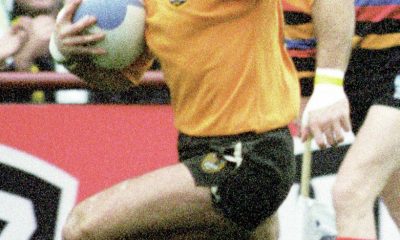
 As the repercussions of George North‘s concussion story look set to rumble on through the New Year, now is surely the time to look at the bigger issue.
As the repercussions of George North‘s concussion story look set to rumble on through the New Year, now is surely the time to look at the bigger issue.
As bad as concussion is, it’s just one of a number of injuries rugby players suffer during their playing days that can have a debilitating affect in later life.
The professionals have the protection of the RPA while they are playing but, as Austin Healey says, that stops once they retire. However, the amateur players have no organisation fighting for them, even while they are playing.
This is a fact that I have written about over the years which has now been reiterated by Healey in his article for The Telegraph. As Austin wrote, “I would say pretty much every player from my generation has picked up some kind of ailment from their playing days. There are not many guys who I know who are not in a pretty bad way. Everyone has got some kind of arthritis, some kind of injury that they have to manage constantly. It is not a good situation for.”
He added virtually the same words as those from my article in May 2015, where I said players are there to be used and discarded when, like a piece of meat, they reach their sell-by date; but Austin was referring only to those who play or played in the professional era.
Well I can tell him it was, and is, a lot worse in the amateur game where players were – and are – not given any help financially to cover the costs of any medical condition as a result of injury while playing.
Even post injury recovery time had no compensation should you be unable to work and I am sure that is true for the vast majority of people playing rugby right now.
As a professional, if the likes of George North decided he could no longer take the risk of carrying on, he could receive an insurance payout that would probably run close to £1m, whereas an amateur who was unable to work because of a rugby injury would have to rely on state funded aid to survive.
I am not talking about serious, catastrophic trauma, but a culmination of a series of injuries that over time restrict movement and agility. As a supporter of the game, my concern is that all care is taken to ensure that all those that are injured while playing have the correct treatment and recuperation, whether in the short or long term, so as to live life to its full potential when playing rugby becomes a distant memory.
While the professional game and the RPA have an awful lot of money to look after their players, World Rugby are promoting the game mainly to amateurs Unions and players who have not and they must be looked after.
The fear that has driven the sudden rush to ‘protect’ players from themselves with the pitchside CMA was born because of litigation in America.
The result of ex-NFL players successfully suing the sport’s governing body sent shockwaves through professional sports across the world but duty of care isn’t something that is limited to those that play a sport for money.
All activity contains risk, so unless you lock yourself in a room with no windows and never leave (even then you would risk an early death through lack of activity) obviously the potential of injury still remains.
Every sport or activity we take part in is an assessment of risk and reward. Risk of injury (or death) versus the reward of health and fitness. If we take part in a structured sport like football, rugby, tennis, horse riding or any of the myriad of sports with rules that tell you how to play, it is beholden on the governing body of that sport to ensure that the risk of injury (short or long term) is kept to a minimum.
Concussion, because of the successful litigation, is currently occupying headlines and all thoughts are on how to reduce the risks associated with it – but this is not the only long-term injury rugby players sustain.
In fact it is not a new phenomenon. Among others, former England captain and current World Rugby chairman Bill Beaumont was forced to retire from the game back in 1982 because of a series of concussions and fortunately he has no signs of any long-term brain trauma, but who knows what the future may hold?
Despite a lack of proper medical care, those that played in the amateur days carried their injuries into old age with little thought of seeking to blame the game for the stiffness in their limbs and a fading memory. However, all that could now change.
With Austin’s generation just beginning the journey into post-rugby life with its accompanying aches, pains and disabilities, some are seeking legal redress from their professional clubs for suspected long term injuries.
If they win, it is likely that the floodgates will open for claims, and as there can be no statute of limitations for a long-term injury that presents itself perhaps 20 or 30 years after the event, rugby as an amateur sport could be forced to end.

Women's International
Sadia Kabeya is ready to have fun as the Red Roses seek World Cup glory on home soil






























You must be logged in to post a comment Login